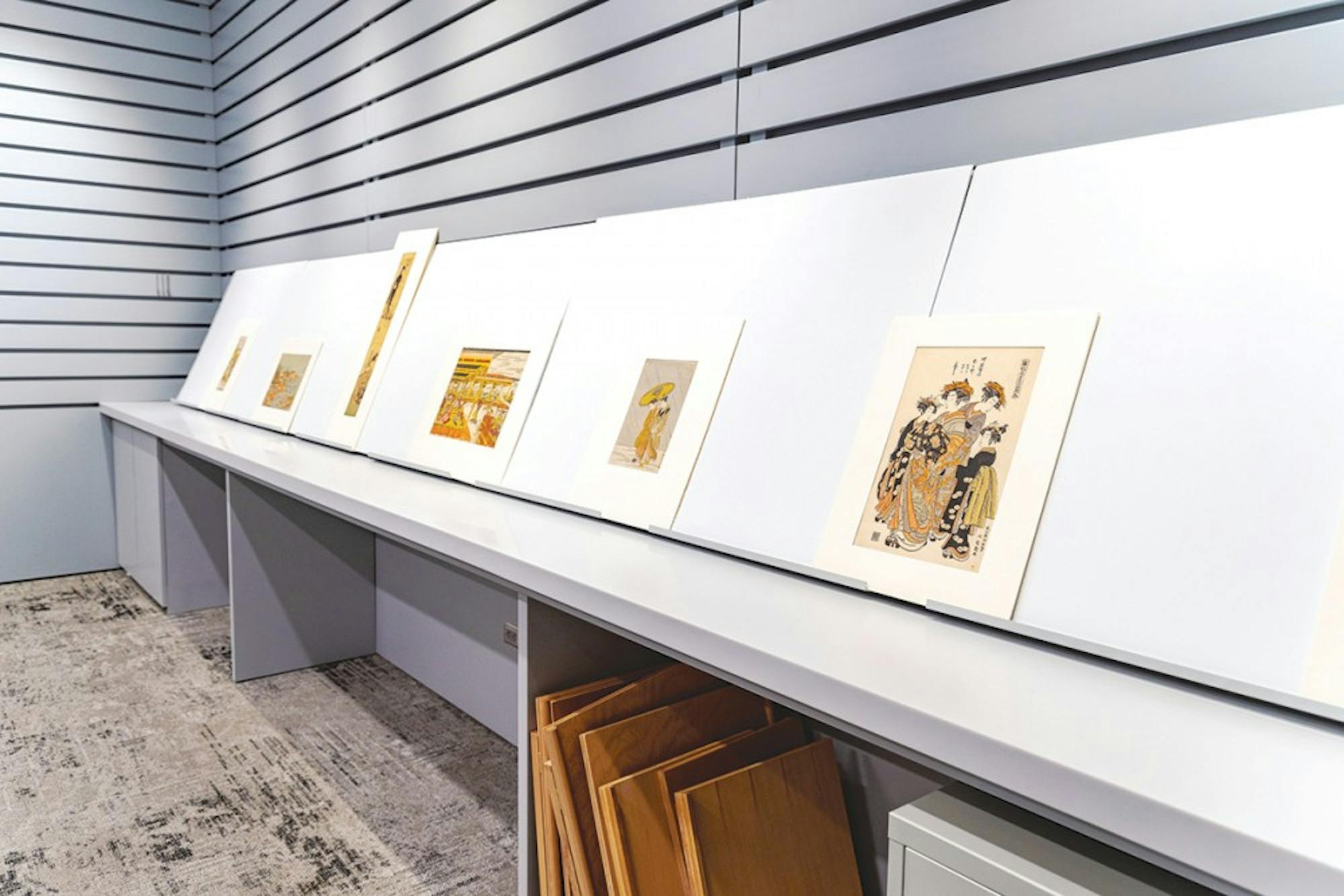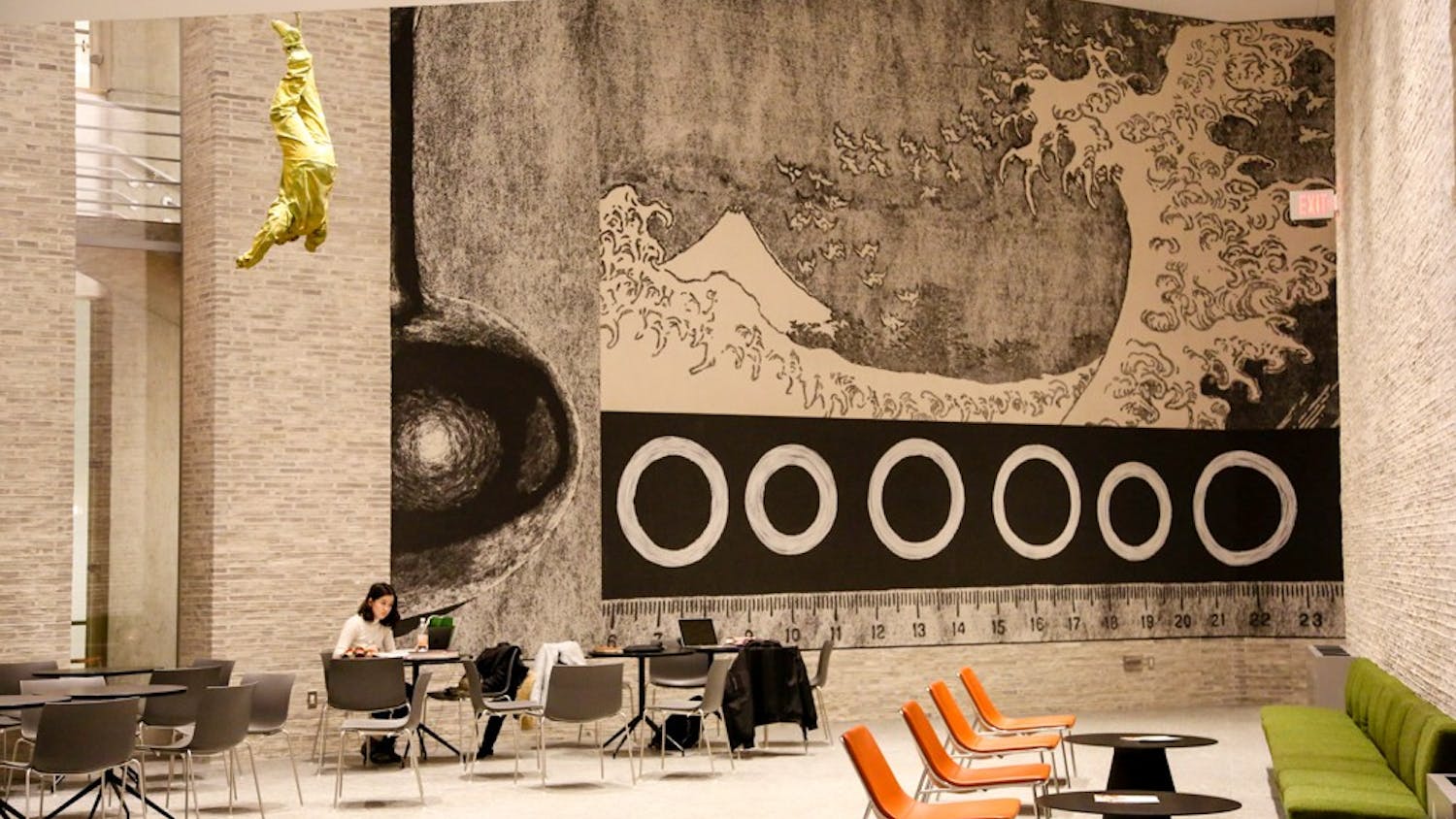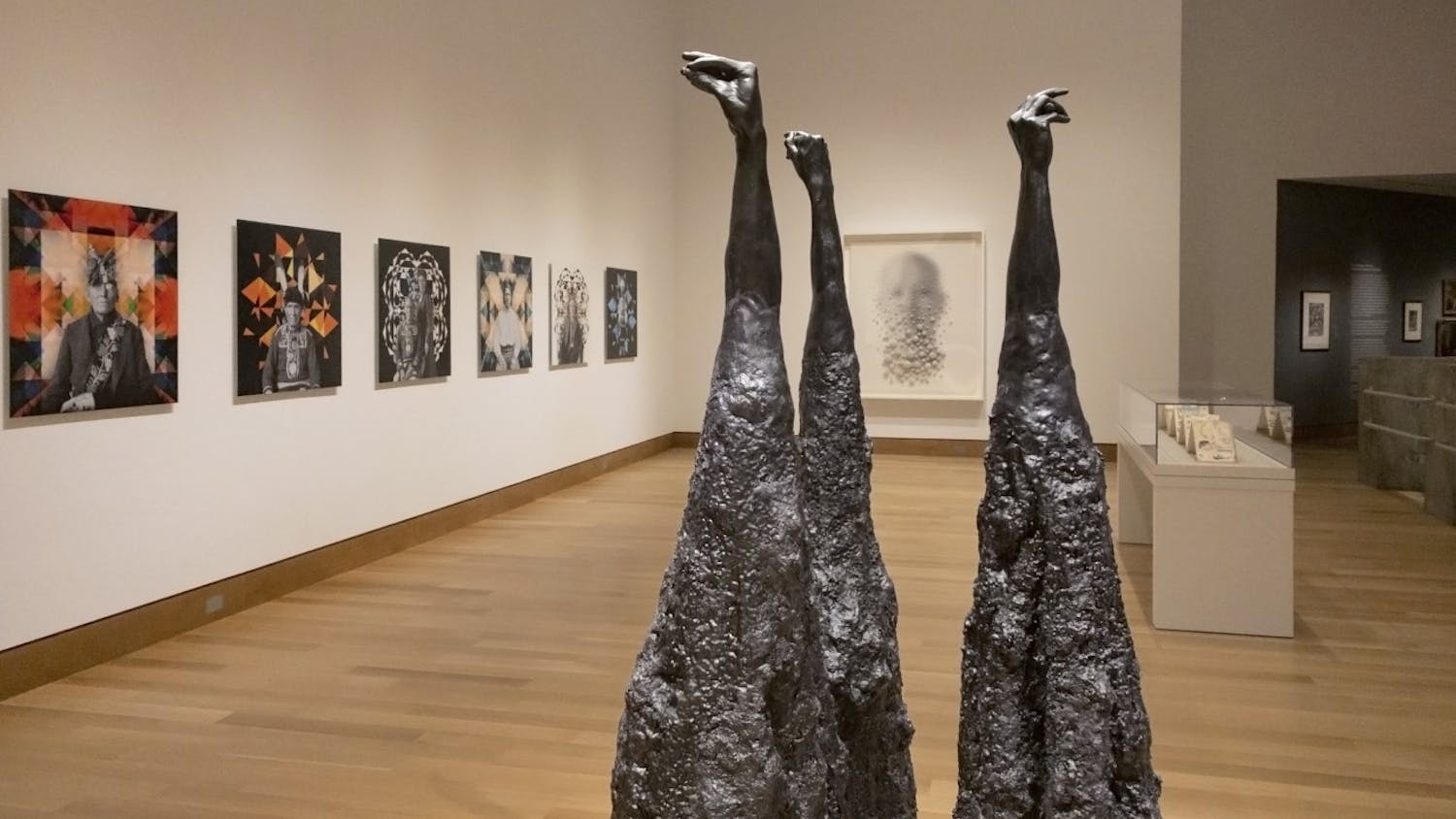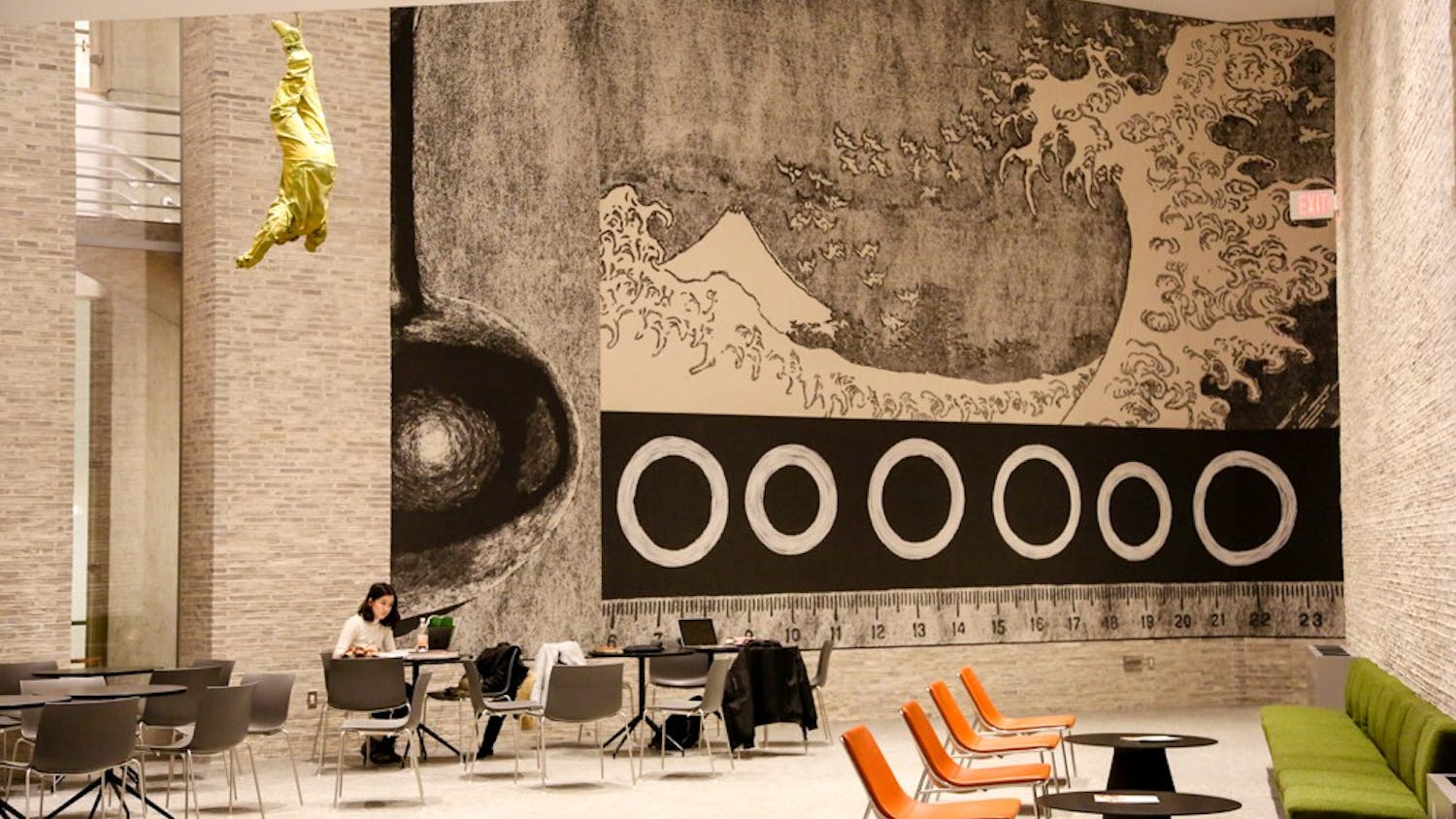Have you ever wondered how museums acquire new pieces and organize exhibits? Since 2002, the Hood Museum of Art has worked to include students in the curatorial process, giving them a behind-the-scenes look into the museum through its Museum Collecting 101 program. The program is offered one term each year to students of all grades and majors, and provides the opportunity for students to select a work — typically a photograph — that the Hood will purchase.
Museum Collecting 101 co-director Amelia Kahl explained the importance of keeping the program open to all.
“We want it to be a way for students to experience art without feeling like they have to go through any sort of formal vetting. It's really for fun and enjoyment and to get a taste of museum collecting,” Kahl said.
The program is split into three parts. First, the group starts with a deep dive into the acquisition policy of the museum. They learn about the space, how photographs are made and how a collector makes decisions. Second, students are given a selection of artists whose work the museum is interested in purchasing. The students are each asked to research one artist and present back to the group. Third, the students discuss and choose a few favorite artists. From there, they select the piece that the Hood will purchase for its collection.
Each year, the program is co-directed by Kahl and one of the Hood’s other curators. This year, the co-director is Jessica Hong, curator of global contemporary art.
Hong explained that her goal is to bring a global perspective to the program. She has selected work from artists around the globe, and at different points in their careers, who were not yet represented in the Hood’s collection. However, according to Hong, a global perspective is about more than the geographic origin of the artists or works.
Hong said that she “really wanted to broaden the class as well as its upwards horizons. All the artists were very different; they had pretty distinct practices.”
In addition to communicating with galleries around the world — from SoHo to Hong Kong to Dubai — this was the first year that time-based media — such as film and audio — were included within the selections. Normally, the program centers around photography.
Even though the group did not end up picking a time-based media piece, Clayton Howard ’21 appreciated the inclusion of such pieces.
“I hadn't really thought about the realities of museums changing with the times, trying to integrate art that isn't just paintings or portraits,” Howard said. “We obviously have the technology to make so many films but yet that's not really popular, and museums need to think about that more. It's an interesting idea that things are changing and museums might look pretty different in the future.”
Though varying their media base, all of the artists and works chosen for the program were centered around contemporary issues.
“A lot of the work was conceptual in certain ways and thinking about greater themes and greater societal issues,” Kahl said. “I think that students really responded to that challenge.”
Howard agreed that the themes of the works led the group to have meaningful discussions. Being able to learn from his peers and navigate the difficulty of finding common ground proved to be an incredibly valuable part of the experience.
“I really enjoyed a lot of the discussions we had around the various artists,” Howard said. “Especially, thinking about the issues of what art is being made, who it's being made for and what it says for us to display this art in a museum.”
Students were given substantial freedom when it came to choosing the piece for purchase. Kahl and Hong provided them only with relevant information and asked them to consider how the work would fit into the academic curriculum and other exhibitions.
Hong explained that choosing a work to add to the collection is not easy.
The students must consider how pieces will work within class curriculums, as well as within the broader Hood collection. Students are also challenged to “[think] about how this object will live into the future and [make] sure that [they are] diversifying the collection in expansive ways,” Hong said.
With few directions to follow, the program relies on students’ prior experience. From engineers to government majors to art history students, each person brings a different perspective to the acquisition process.
When describing the group, Kahl mentioned the variety of interests she has observed.
“Some of them are really interested in aesthetics, for some of them, it's abstraction and those qualities,” Kahl said. “Some are really interested in social justice issues. Some of them want art that's more narrative. Some of them are really interested in technical things.”
Having students bring different lenses to the program makes the conversations deeper and more meaningful. They work through a variety of concerns, giving students the opportunity to share their areas of expertise and passion.
“People were [coming] at it from very different angles,” Howard said. “Some people were photography majors; they were able to speak on the aesthetics of the photos. A lot of people were more concerned with the social issues around the pieces that we could be purchasing. I think that [it’s] important to have all sorts of different views because when you are spending a lot of money on a piece of art, you really do have to think about all these things.”
In the end, picking the piece was not contentious. Students focused on both aesthetic beauty and relevance to today’s society in making their final decision. According to Kahl, the class had a budget of $12,500.
They chose Maïmouna Guerresi’s “Aisha’s Story 1, 2016,” which is a large photograph almost four-by-five feet in size. In the photograph, Guerresi places a Muslim woman within the context of Lewis Carroll’s “Alice’s Adventures in Wonderland.” Hong and Kahl were both pleased with the selection and look forward to using it for teaching and display.
“It will add nicely to our collection of figural photographs, particularly images of women — images of Middle Eastern women, images of Muslim women — as well as thinking about narrative and story and fairy tale. It has a lot of different things going for it,” Kahl said.
The students’ names will be displayed in the credit line as curators of the work, though Hong hopes that they take more away from the program than just recognition.
“I hope that at the very least, it opened their eyes a little bit about the process and the multiple layers that are part of that process,” Hong said. “I hope that they were able to see the kind of complex but really rewarding process of museum collecting.”
Howard said that he found the program a great way to experience the museum from a curatorial standpoint. Since art is so personal, he said that he learned a lot from discussions with his peers. By hearing different viewpoints, he gained a better appreciation for the various factors that contribute to selecting every work of art.
“There are so many factors that need to be considered when choosing a piece of art,” Howard said. “[The program] gives you a greater appreciation and more personal connection to the work. I'll be very excited to come and show my friends and be like, ‘Look, we bought that.’”




